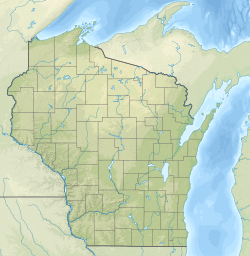2010 census
As of the census [9] of 2010, 859 people, 410 households, and 215 families resided in the city. The population density was 200.2 inhabitants per square mile (77.3/km2). The 467 housing unitsaveraged of 108.9 per square mile (42.0/km2). The racial makeup of the city was 97.0% White, 0.1% African American, 1.4% Native American, 0.1% Asian, 0.6% from other races, and 0.8% from two or more races. Hispanics or Latinos of any race were 1.0% of the population.
Of the 410 households, 19.5% had children under the age of 18 living with them, 40.5% were married couples living together, 7.8% had a female householder with no husband present, 4.1% had a male householder with no wife present, and 47.6% were not families. About34.9% of all households were made up of individuals, and 13.4% had someone living alone who was 65 years of age or older. The average household size was 2.10 and the average family size was 2.74.
The median age in the city was 42.3 years; 16.9% of residents were under the age of 18; 10.3% were between the ages of 18 and 24; 26.5% were from 25 to 44; 28.6% were from 45 to 64; and 17.8% were 65 years of age or older. The gender makeup of the city was 53.1% male and 46.9% female.
2000 census
As of the census [4] of 2000, 983 people, 444 households, and 241 families resided in the city. The population density was 220.6 people per square mile (85.1/km2). The 470 housing units averaged 105.5 per square mile (40.7/km2). The racial makeup of the city was 99.49% White, 0.10% Native American, 0.10% Asian, and 0.31% from two or more races. Latinos of any race were 0.10% of the population.
Of the 444 households, 25.5% had children under the age of 18 living with them, 45.0% were married couples living together, 6.3% had a female householder with no husband present, and 45.5% were not families. Around 40.1% of all households were made up of individuals, and 15.3% had someone living alone who was 65 years of age or older. The average household size was 2.11 and the average family size was 2.90.
In the city, the population was distributed as 19.7% under the age of 18, 9.8% from 18 to 24, 28.8% from 25 to 44, 22.2% from 45 to 64, and 19.5% who were 65 years of age or older. The median age was 39 years. For every 100 females, there were 102.7 males. For every 100 females age 18 and over, there were 102.8 males.
The median income for a household in the city was $31,524, and for a family was $47,692. Males had a median income of $31,488 versus $20,000 for females. The per capita income for the city was $18,396. About 2.8% of families and 6.8% of the population were below the poverty line, including 4.4% of those under age 18 and 10.8% of those age 65 or over.













